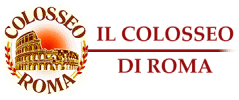Roman roads
We present the main roads of the Roman Empire
The great Roman roads, the so-called Consular Roads, have traversed Italy since ancient times and we still travel them today perhaps totally unaware of them.
Early Roman consular roads
All the consular roads are a tangible demonstration of the greatness of Rome and particularly of ancient Roman civilization. From the ancient Romans, in fact, we inherit what are still our main urban connecting ridges that run through the entire country.
The Romans were the first to introduce into their civilization the need for travel so they created a dense network of roads to reach every civilized and conquered location. As the empire expanded, the expansion of the road network was automatically realized, which developed along a main ridge from which branched a myriad of secondary roads that served as interchanges between the major cities, the suburbs and the countryside.
All Roman provinces were connected to Rome
Rome, succeeded in creating a road network that touched all the Roman provinces and made it reachable from all parts of the empire to connect to the capital.
The system of road construction even today is being studied
We are thus witnessing works of high engineering that are still inexplicable both for the enormous sacrifice for construction and the amount of materials transported-remember that Roman roads were all paved with stone slabs complete with roadside verges-and for the painstaking study of geo-archaeology. In living memory, there is no record of a Roman road ever collapsing; all the work upstream of the construction is still today, the subject of study.
The supply roads for the Roman legions.
The first roads built by the Romans had primarily warlike uses; in fact, the primary need to enable their legions to be adequately supplied and to be reached in a limited time gave these works the status of legend.
The Roman road symbol of greatness
Later they moved on to the construction of roads for political purposes, but this type of construction mostly concerned the small villages around Rome already from the beginning a source of political publicity for the senators of the time.
The roads of the empire used for trade
At a later time the roads were better “interpreted” in fact they were targeted by trades.
Hence the opening up to the world of the East full of infinite riches; trade for profit and no longer barter aimed at basic necessities, it should be said, is gaining ground.
The different purposes for road construction
From a spontaneous emergence of straight roads baptized according to need (think, for example, of the via salaria dedicated to the transportation of salt), to a public work strongly desired by politicians (hence the names of censors and consuls).
after all, in ancient Rome it really cost very little to build a road, the labor used was mainly that of slaves and soldiers, and there was little concern for expropriation or even environmental impact, they just built.
"All roads lead to Rome."
The main thing was that the road built should last forever. We can say without a shadow of a doubt that the goal has been fully achieved, and the proof is that after about two millennia we still remember and use these great works.
The main roads of the empire preserved to this day are:
- Appian Way
- Aurelia Street
- Via Cassia
- Via Claudia Augusta
- Via Emilia
- Via Flaminia
- Via Salaria
